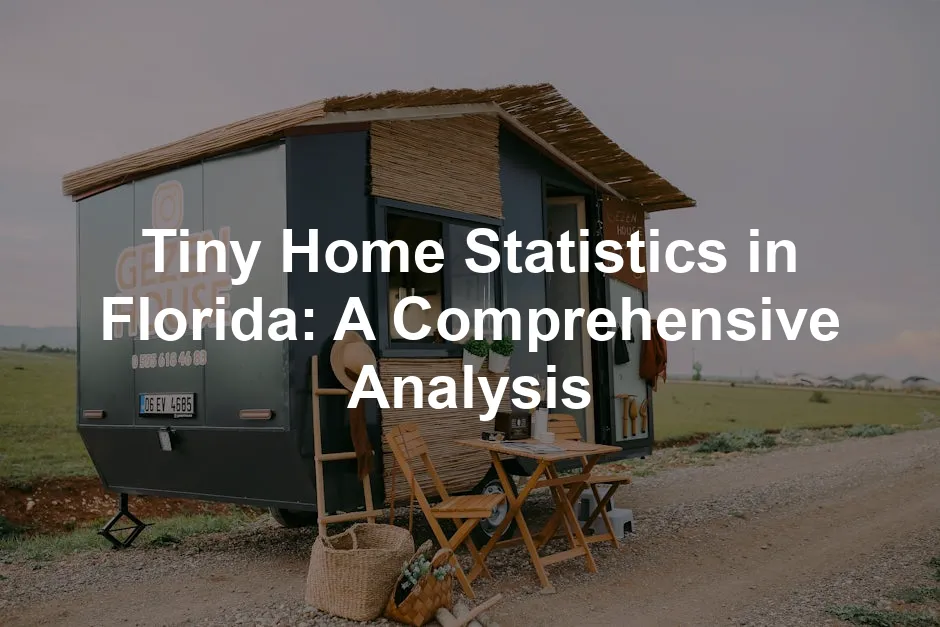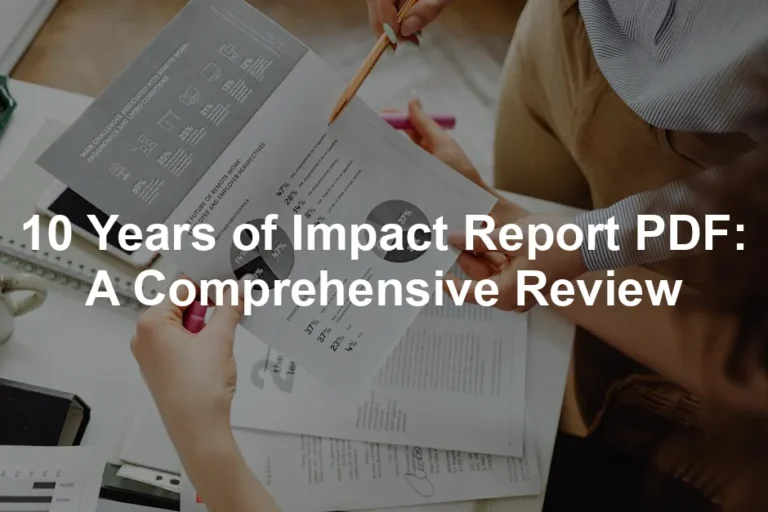Introduction
The tiny home movement has blossomed in recent years, transforming the way we think about housing. In sunny Florida, this trend carries particular significance. With skyrocketing real estate prices, many Floridians are exploring affordable alternatives. Tiny homes offer not just a budget-friendly option but also a chance to embrace a minimalist lifestyle.
Florida’s housing market faces challenges. The state grapples with rising costs, leaving many residents struggling to find affordable homes. Enter tiny homes, which can provide a solution to this growing crisis. These pint-sized dwellings, often under 400 square feet, are appealing for their affordability and ecological benefits. They encourage a lifestyle that prioritizes experiences over possessions.
This article aims to present detailed statistics and insights into tiny homes in Florida. We’ll explore market trends, demographics, and environmental impacts that make tiny homes increasingly relevant. As we dive into the world of tiny living, you’ll uncover why this movement is gaining traction in the Sunshine State.
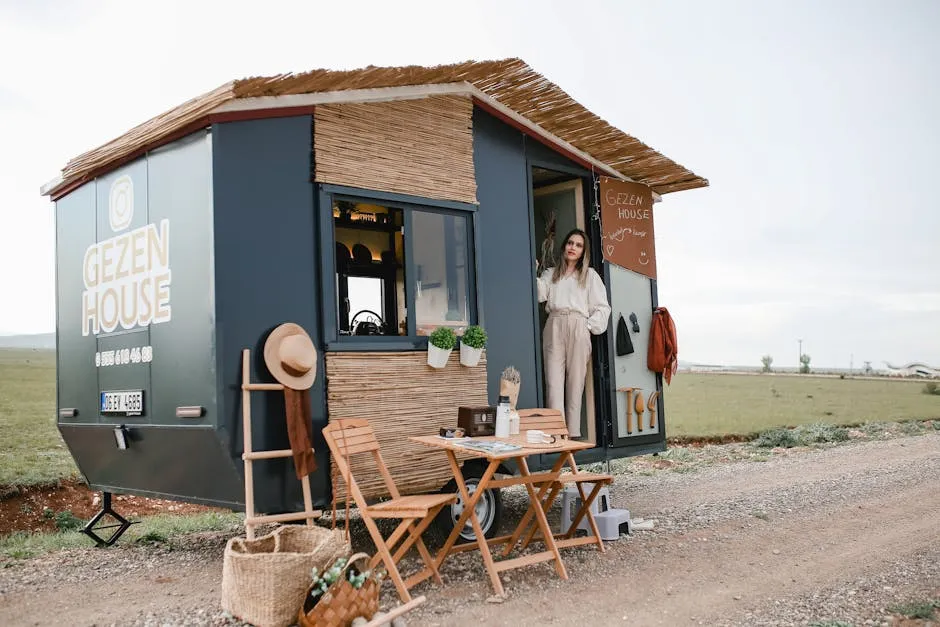
The Tiny House Movement in Florida
What are Tiny Homes?
Tiny homes are defined as residential structures that typically span between 100 and 400 square feet. They come in two main types: mobile and stationary. The tiny house movement began gaining momentum in the early 2000s, but its roots can be traced back to the 1840s when Henry David Thoreau built his famous tiny dwelling. For those inspired to start this journey, check out “Tiny House: A Guide to Living Small” by Ryan Mitchell.
In Florida, the appeal of tiny homes is undeniable. They present a unique alternative to traditional housing, particularly for those seeking to downsize or simplify their lives. Many Floridians are drawn to the idea of living smaller, particularly in a state where real estate prices can be daunting. Tiny homes provide an opportunity to live comfortably without the burden of hefty mortgages, making homeownership achievable for many.
Moreover, the tiny home movement aligns with the growing emphasis on eco-friendly living. With reduced energy consumption and smaller carbon footprints, tiny homes cater to environmentally conscious individuals. As Florida continues to face housing shortages and rising costs, the tiny home movement is poised to play a critical role in shaping the future of housing in the state.
In summary, tiny homes are not merely a passing trend; they represent a lifestyle shift that resonates with many Floridians. This movement offers practical solutions to housing challenges while promoting sustainability. If you want to dive deeper into the movement, consider reading “The Big Tiny: A Built-It-Myself Memoir” by Dee Williams.

The Growth of Tiny Homes in Florida
The tiny home movement is gaining traction in Florida, with an impressive rise in interest over recent years. According to recent data, the number of tiny homes in Florida has increased significantly, reflecting a broader trend across the nation. Currently, Florida is home to an estimated 10,000 tiny homes, with projections indicating continued growth as more residents seek affordable housing solutions.
Demographics surrounding tiny homeowners in Florida reveal a diverse group. Approximately 55% of tiny home owners are women, while around 40% are over the age of 50. This shift indicates a growing interest among both millennials and retirees, who are attracted to the minimalist lifestyle and the financial benefits associated with tiny living. If you’re curious about how to get started, check out “Tiny Homes: Simple Shelter” by Paul J. McNulty.
So, why are people opting for these pint-sized dwellings? Affordability tops the list. The average cost of a tiny home in Florida is around $52,000, significantly lower than the median price of a traditional home, which hovers around $380,000. This stark price difference makes tiny homes an enticing option for first-time buyers and those looking to downsize.
Sustainability is another key motivation. Many tiny homeowners embrace eco-friendly living, utilizing energy-efficient appliances and materials to minimize their carbon footprints. Additionally, the appeal of simplifying one’s life and focusing on experiences rather than possessions resonates strongly with many Floridians, leading them to choose tiny homes. For those interested in energy solutions, a Solar Panel Kit for RV, Boat, or Tiny House might be just what you need.
In summary, the growth of tiny homes in Florida reflects a shift in consumer preferences driven by affordability, sustainability, and lifestyle changes. As more residents discover the benefits of tiny living, this movement is likely to continue expanding, reshaping the housing landscape across the state.

Tiny Home Market Trends in Florida
Pricing and Affordability
When it comes to pricing, tiny homes in Florida offer a stark contrast to traditional housing. The average cost of a tiny home is approximately $52,000, while traditional homes can exceed $380,000. This makes tiny homes about 87% cheaper than their larger counterparts. For many residents, this price point is a game changer, allowing for homeownership without the weight of a significant mortgage.
Several factors influence tiny home prices in Florida. Location plays a crucial role; homes situated near urban centers or popular attractions tend to be priced higher. For instance, tiny homes in counties like Orange or Miami-Dade may command a premium due to their proximity to major cities. Additionally, the amenities offered within tiny homes can impact pricing. Homes equipped with high-end finishes, energy-efficient systems, and innovative designs can range from $80,000 to $150,000, depending on the buyer’s preferences.
The financial benefits of owning a tiny home extend beyond the initial purchase price. Tiny homeowners often enjoy lower utility bills and maintenance costs. With an average monthly expense of around $1,000, tiny home residents can save significantly compared to the typical monthly costs associated with larger homes. Many tiny homeowners also report that they are mortgage-free, as approximately 68% of them do not carry any mortgage debt.
In summary, the tiny home market in Florida presents a compelling case for affordability. With prices significantly lower than traditional homes and ongoing financial benefits, tiny homes are becoming an increasingly attractive option for many residents. As the demand for affordable housing solutions continues to grow, tiny homes will likely play a crucial role in addressing Florida’s housing challenges. Consider exploring “The Tiny House Handbook: A Complete Guide to Tiny House Living” by Joshua & Shelley Engberg for more insights.
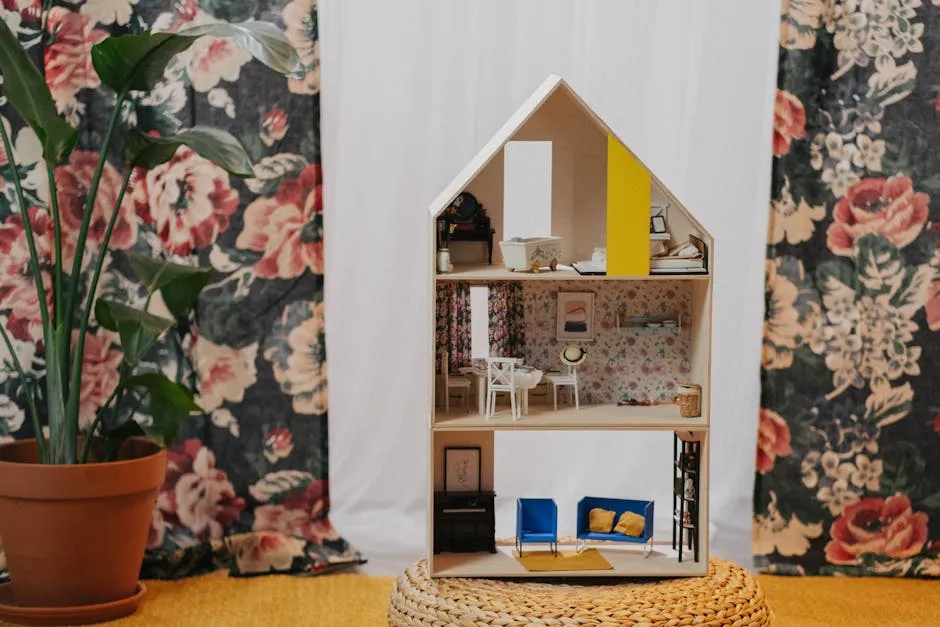
Demand and Supply Dynamics
Tiny homes are sprouting up like Florida’s wildflowers. Recent data reveals a notable uptick in tiny home listings across the state. As of 2023, there are approximately 130 tiny homes available on the market in Florida. This represents a significant increase from previous years, reflecting a growing demand for alternative living solutions. The tiny home movement is not just a fad; it’s a response to the rising cost of living and housing shortages faced by many Floridians.
Counties like Orange and Miami-Dade are seeing a surge in tiny home popularity. These urban areas, often grappling with skyrocketing housing prices, have embraced tiny homes as a viable option. Tiny homes appeal to diverse demographics, from millennials seeking affordable ownership to retirees looking to downsize. The trend is not just about living small; it’s about living smart.
Tiny homes offer a solution to housing shortages, especially in urban centers. With affordability issues plaguing many residents, these pint-sized dwellings provide an attractive alternative. Tiny homes can be placed in backyards as accessory dwelling units (ADUs) or developed into entire communities. They fill the gap for those who need housing but cannot afford traditional options. By promoting a minimalist lifestyle, tiny homes encourage residents to prioritize experiences over possessions, making them even more appealing. If you’re interested in how to organize your tiny space, you might want to consider “Tiny House Living: Ideas for Building and Living Well in Less than 400 Square Feet” by Ryan Mitchell.
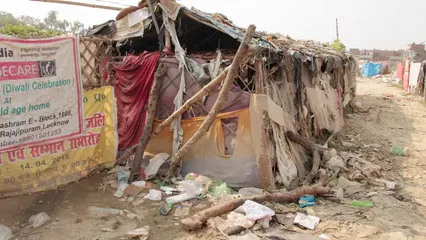
Tiny Home Communities in Florida
Florida is home to several notable tiny home communities that have captivated the hearts of many. One standout example is The Oaks, located near Tampa. This charming community features 33 modern tiny homes, each under 400 square feet, designed for comfortable living. Prices range from $95,000 to $249,550, making them an affordable option for those looking to downsize.
Residents of The Oaks enjoy a wealth of amenities, including a pool, communal gardens, and shared spaces like a community office. This blend of private and communal living fosters a strong sense of community among residents. Many share stories of how the tiny home lifestyle has transformed their lives, allowing them to connect with neighbors and embrace a simpler, more sustainable way of living. If you’re considering a tiny home lifestyle, you might want to look into “The Tiny House Movement: A Complete Guide to Tiny Homes” by J. A. Wright.
Testimonials from residents emphasize the benefits of community living. One resident, a retired teacher, expressed gratitude for the supportive environment. “I’ve made more friends here than I ever did in my larger home,” she said. Another resident, a young entrepreneur, appreciates the freedom that comes with tiny living. “I can focus on my business without the burden of a hefty mortgage,” he shared.
Tiny home communities like The Oaks exemplify how these compact dwellings can create vibrant neighborhoods. By prioritizing shared experiences and sustainable living, Florida’s tiny home communities are paving the way for a new era of housing. As the demand for affordable housing solutions continues to grow, these communities are likely to become a cornerstone of Florida’s real estate landscape.
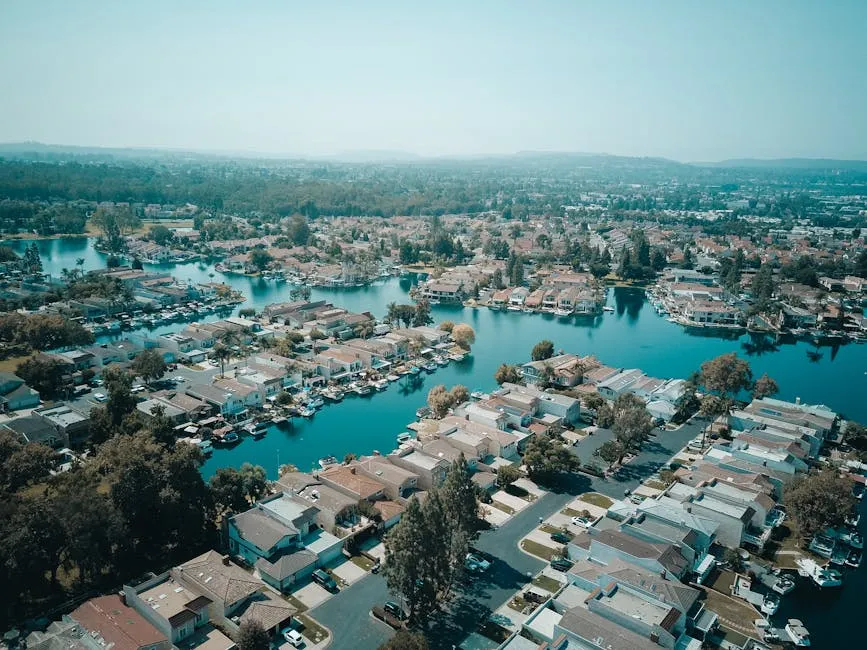
Tiny Home Demographics in Florida
Who Lives in Tiny Homes?
In Florida, tiny homes are attracting a diverse range of residents. Demographic data shows interesting trends in age, gender, and income among tiny homeowners. Approximately 40% of tiny homeowners are over the age of 50, signaling a shift towards a more mature audience. However, millennials are also significantly represented, drawn by the allure of affordable living.
Gender distribution reveals that women make up about 55% of tiny home owners, while men account for 45%. This slight female majority suggests that women may be more inclined to embrace the tiny home lifestyle, often seeking independence and financial freedom.
Income levels among tiny homeowners are equally compelling. The average annual income for tiny households hovers around $42,038. This figure indicates that many tiny homeowners may be seeking affordable alternatives to traditional housing, especially in a market where costs can be prohibitive. Additionally, around 68% of tiny homeowners report being mortgage-free, which is a significant contrast to the broader population.
Motivations for choosing to downsize vary widely. Financial constraints often drive this decision, as the average cost of a tiny home in Florida is around $52,000, a staggering 87% less than the average traditional home. Many find the prospect of living without substantial debt appealing. Sustainability is another key motivator. Tiny homes typically use fewer resources, making them an attractive choice for environmentally conscious individuals. If you’re interested in eco-friendly options, consider checking out Eco-Friendly Insulation for Tiny Homes.
Education levels among tiny home residents also paint a noteworthy picture. Studies show that tiny homeowners are often more educated than average, with many holding advanced degrees. This trend suggests that educated individuals are increasingly drawn to the benefits of minimalism and sustainability.
Employment status among tiny home residents reveals a mix of professions. Many tiny homeowners are self-employed or work in fields that offer flexibility, such as technology, arts, and education. This aligns well with the tiny home lifestyle, which often emphasizes mobility and adaptability.

Gender and Income Statistics
When it comes to income, tiny homeowners showcase a unique financial landscape. The average income of $42,038 indicates that many are living comfortably, albeit with a focus on affordability. Additionally, the financial implications of tiny home ownership are notable. With low initial purchase prices and minimal upkeep costs, many residents enjoy substantial savings.
The gender distribution among tiny homeowners reveals that women are slightly more prevalent. At 55%, women often represent the driving force behind tiny home purchases. This statistic hints at a broader trend of women seeking independence through home ownership, especially in a market that has become increasingly challenging.
Understanding the financial implications of tiny home living is crucial for potential buyers. The typical monthly expenses for tiny homeowners can be significantly lower than those of traditional homeowners. With reduced utility bills and no mortgage payments, many tiny homeowners can invest more in experiences rather than possessions. This financial freedom aligns perfectly with the motivations driving the tiny home movement, making it a compelling option for many Floridians seeking an alternative lifestyle. If you’re looking for minimalist living solutions, consider Compact Kitchen Appliances for Tiny Living.

Environmental Impact and Sustainability
Eco-Friendly Features of Tiny Homes
Tiny homes are often celebrated for their sustainability. Compared to traditional homes, they require fewer materials and energy to build and maintain. The environmental impact is significantly lower, with tiny homes producing only a fraction of the carbon emissions associated with larger dwellings. For instance, a tiny home generates approximately 286 pounds of CO2 annually, whereas traditional homes can emit around 4,000 pounds.
Moreover, many tiny homes incorporate eco-friendly features such as solar panels and rainwater collection systems. These innovations not only reduce energy consumption but also foster a lifestyle that prioritizes sustainability. The average energy consumption of a tiny home is about 7% of that of a traditional home, showcasing their efficiency. If you’re interested in sustainable practices, consider a Rainwater Collection System for Tiny Homes.
Furthermore, tiny homes often promote a minimalist lifestyle. By encouraging residents to downsize their belongings, these homes help reduce waste and foster a greater appreciation for experiences over material possessions. The focus on simplicity resonates strongly with the eco-conscious ethos prevalent among many tiny homeowners in Florida.
Ultimately, tiny homes represent a sustainable alternative to conventional living. Their design and functionality cater to those who wish to minimize their environmental footprint while enjoying the benefits of homeownership. As the movement continues to grow, tiny homes will likely play an increasingly important role in addressing housing challenges and promoting sustainable living practices in Florida.
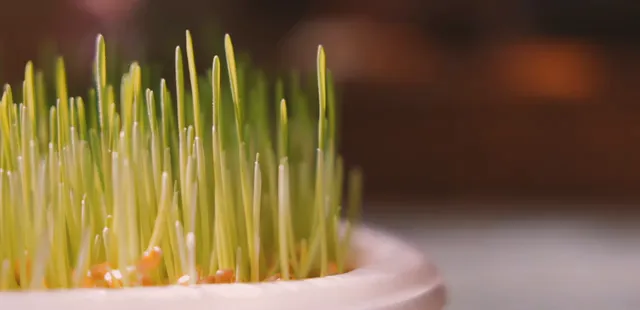
Tiny Homes as a Solution to Homelessness
In the context of Florida’s housing crisis, tiny homes are emerging as a viable solution to homelessness. With skyrocketing property prices and a shortage of affordable housing, these pint-sized dwellings offer a lifeline to those in need. Tiny home communities are sprouting up across the state, aiming to provide shelter for vulnerable populations.
For example, “The Dwellings” project in Tallahassee showcases how tiny homes can serve as a remedy for homelessness. This initiative focuses on creating a supportive environment for low- to moderate-income residents. It features 89 tiny homes, with plans for more, and combines living space with essential support services. The project’s success hinges on community involvement and funding, emphasizing the importance of collaboration in addressing housing challenges.
Government policies are also evolving to accommodate tiny home developments. Local leaders are increasingly recognizing the potential of tiny homes to alleviate housing shortages. Initiatives aimed at simplifying zoning regulations and permitting processes are underway, paving the way for more tiny home communities. In Orange County, for instance, officials are exploring the use of surplus county-owned properties as potential sites for tiny home development.
Community responses have been largely positive, with many residents advocating for tiny home projects. The appeal lies in the opportunity to create vibrant, supportive neighborhoods that foster connection and collaboration. By bringing people together, tiny home communities can combat the isolation often felt by those experiencing homelessness. For those wanting to learn more about tiny home communities, consider reading “Tiny House Community Network Book”.
In conclusion, tiny homes represent more than just a housing solution; they embody a shift towards community-oriented living. By addressing homelessness through innovative projects and supportive policies, Florida can harness the power of tiny homes to create lasting change.

For more insights into the current trends and statistics surrounding tiny homes, check out our article on tiny home statistics in Florida.
Please let us know what you think about our content by leaving a comment down below!
Thank you for reading till here 🙂
All images from Pexels

